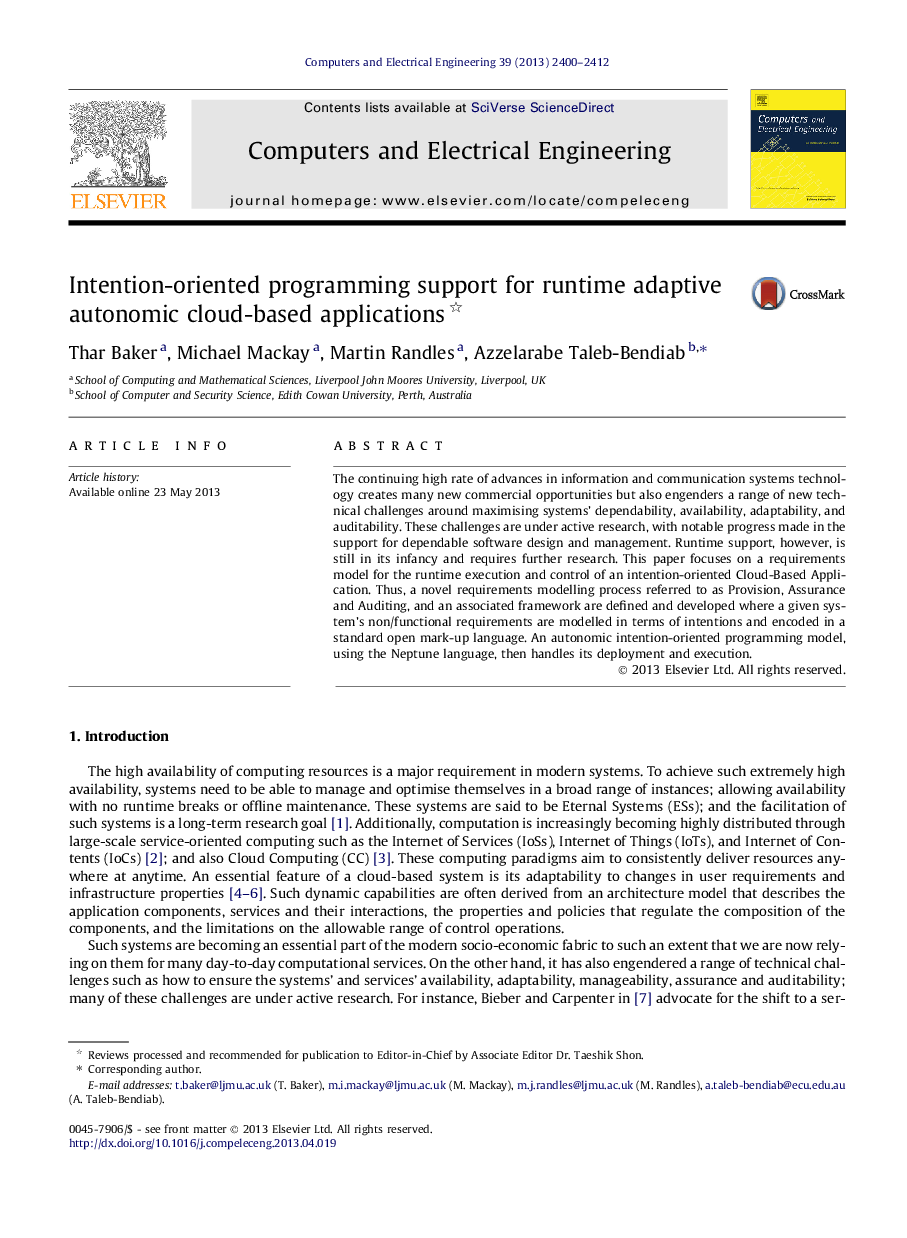| کد مقاله | کد نشریه | سال انتشار | مقاله انگلیسی | نسخه تمام متن |
|---|---|---|---|---|
| 455700 | 695530 | 2013 | 13 صفحه PDF | دانلود رایگان |

• We use 4-tiers architecture in adaptive cloud-based application development.
• The approach adapts the cloud-based applications at runtime to respond to the emergent changes in user requirements.
• We test and evaluate the runtime adaptation vs Microsoft Petshop application benchmark.
• Runtime adaptation, through WikiEditor, may lead to new kinds of runtime errors.
• Hot-swapping and hot-plugging are achievable thorough the intention model manipulation.
The continuing high rate of advances in information and communication systems technology creates many new commercial opportunities but also engenders a range of new technical challenges around maximising systems’ dependability, availability, adaptability, and auditability. These challenges are under active research, with notable progress made in the support for dependable software design and management. Runtime support, however, is still in its infancy and requires further research. This paper focuses on a requirements model for the runtime execution and control of an intention-oriented Cloud-Based Application. Thus, a novel requirements modelling process referred to as Provision, Assurance and Auditing, and an associated framework are defined and developed where a given system’s non/functional requirements are modelled in terms of intentions and encoded in a standard open mark-up language. An autonomic intention-oriented programming model, using the Neptune language, then handles its deployment and execution.
Figure optionsDownload as PowerPoint slide
Journal: Computers & Electrical Engineering - Volume 39, Issue 7, October 2013, Pages 2400–2412